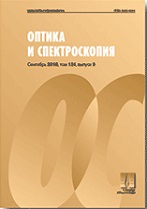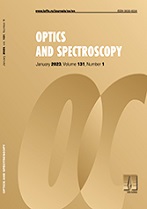|
Applied optics
Granulometric discrimination of marine sediments based on trace metal content measured by the technique LIBS (laser induced breakdown spectroscopy)
M. Nianga, G. Y. Mbesse Kongbongab, H. Ghalilac, H. Majdibc, N. A. Boye Fayea, L. Choubad
a Laboratory of Atoms Lasers, Department of Physics, Faculty of Sciences and Techniques, University Cheikh Anta Diop, Dakar, Senegal
b Faculty of Sciences, University of Bangui, Central African Republic
c Laboratory of Atomic Molecular Spectroscopy and Applications, Department of Physics, Faculty of Sciences, University Tunis
El Manar, Campus Universities, Tunis, Tunisia
d National Marine Institute of Sciences and Technologies (INSTM),
Tunisia
Abstract:
The accumulation of sediment in the harbors hinders the easy movement of boats. To avoid this, dredging operations are carried out regularly to restore correct functioning but also to present water quality managing the huge amount of dredged sediments and recycling them into building materials is a major challenge for the treatment of these sediments. It is within this framework that we propose to use the Laser Induced Breakdown Spectroscopy (LIBS) as a promising new technique for measuring trace metal concentrations of marine sediment samples. Our work has focused on the effect of granulometry on the relative concentration of inorganic compounds. The Principal Component Analysis (PCA) discriminated between different sediment clustering them into three groups: G1 (1.25mm–75 μm), G2 (75 μm–50 μm) and G3 (< 50 μm). Significant differences between element concentrations in the three groups, corroborating published works, were observed and concentrations in each group are reported in this study.
Keywords:
heavy metals, grain size, LIBS, chemometrics, marine pollution.
Received: 17.07.2020
Revised: 17.07.2020
Accepted: 11.11.2020
Citation:
M. Niang, G. Y. Mbesse Kongbonga, H. Ghalila, H. Majdib, N. A. Boye Faye, L. Chouba, “Granulometric discrimination of marine sediments based on trace metal content measured by the technique LIBS (laser induced breakdown spectroscopy)”, Optics and Spectroscopy, 129:3 (2021), 372; Optics and Spectroscopy, 129:3 (2021), 369–374
Linking options:
https://www.mathnet.ru/eng/os1104 https://www.mathnet.ru/eng/os/v129/i3/p372
|


| Statistics & downloads: |
| Abstract page: | 46 | | Full-text PDF : | 14 |
|



 Contact us:
Contact us: Terms of Use
Terms of Use
 Registration to the website
Registration to the website Logotypes
Logotypes